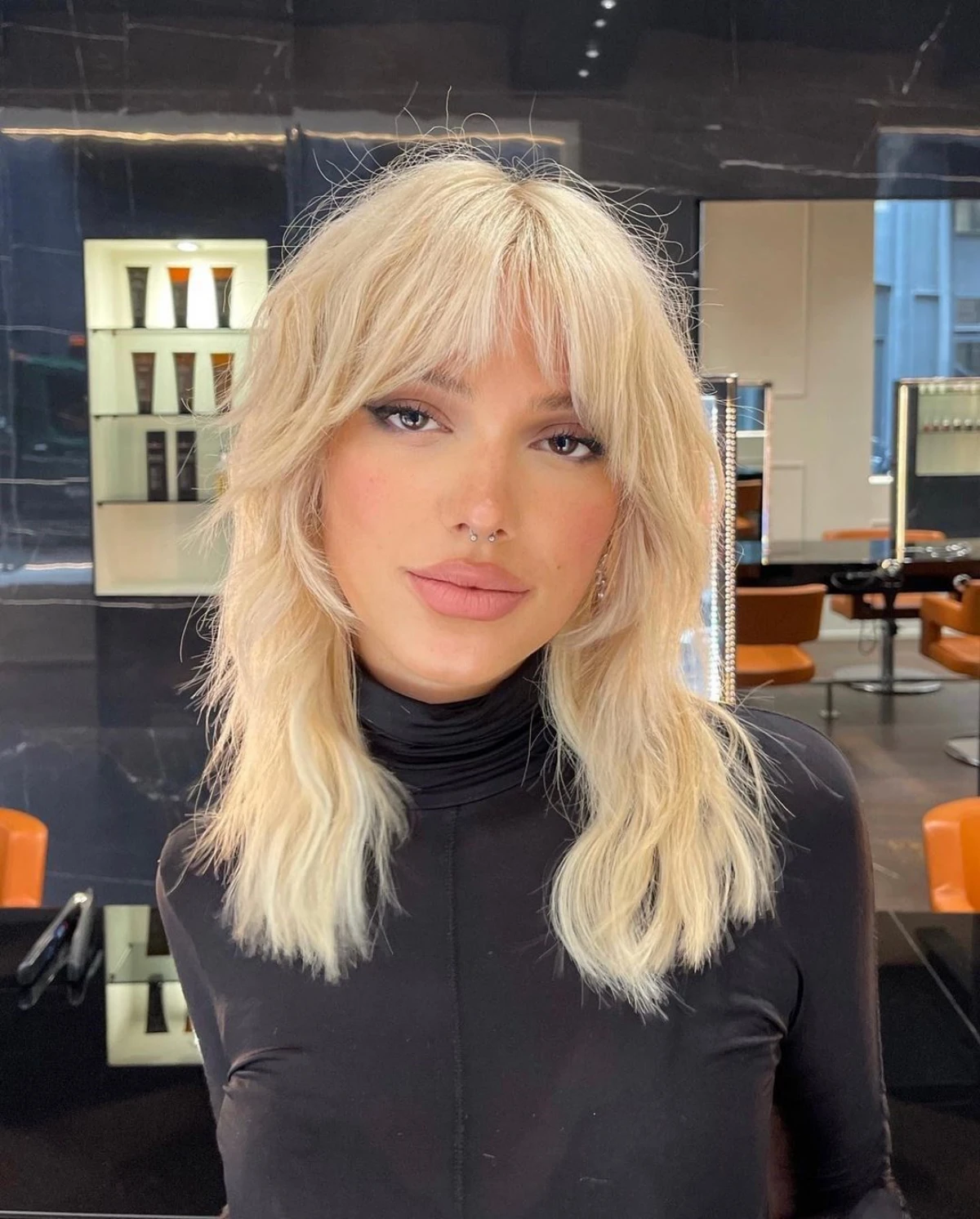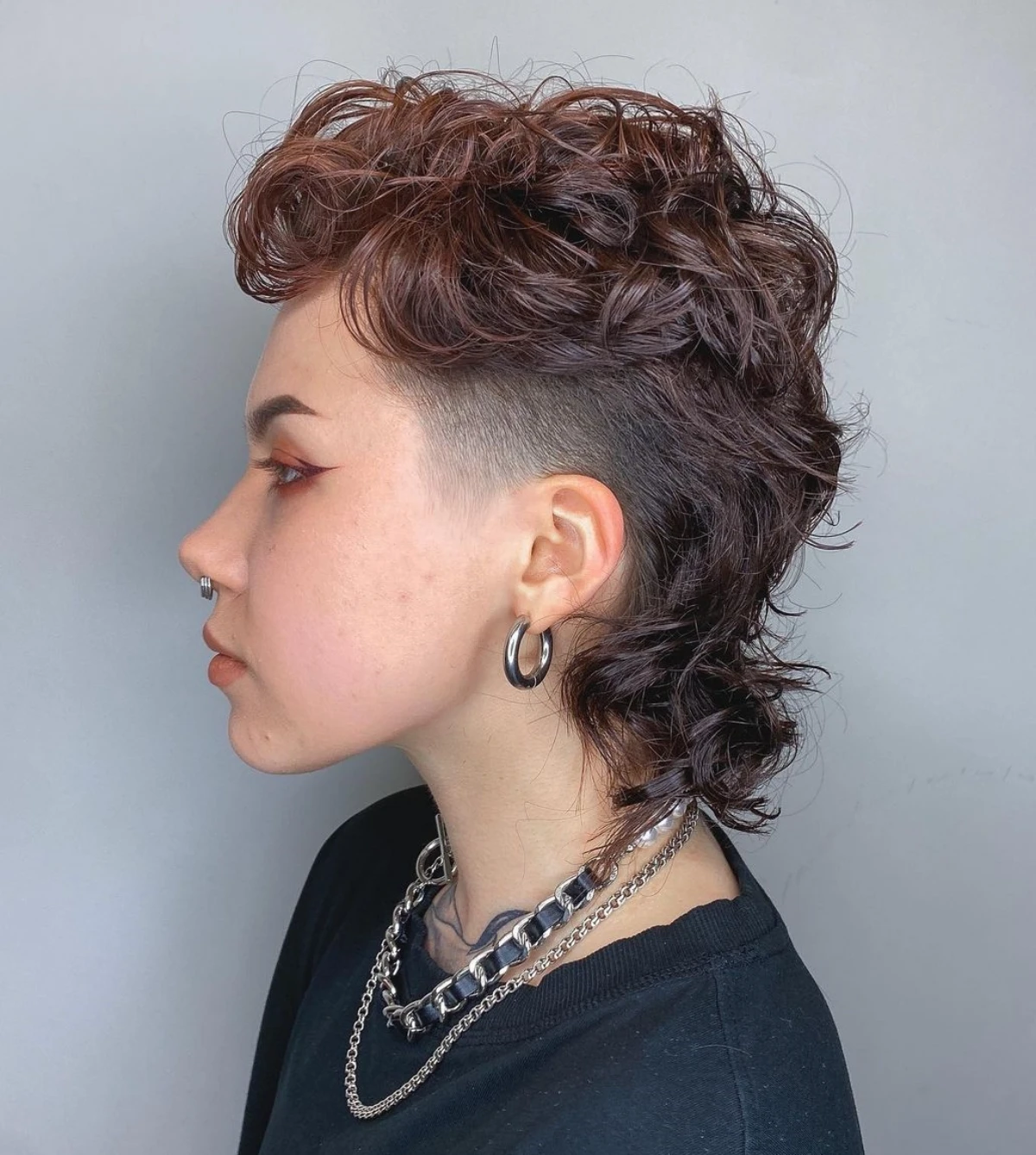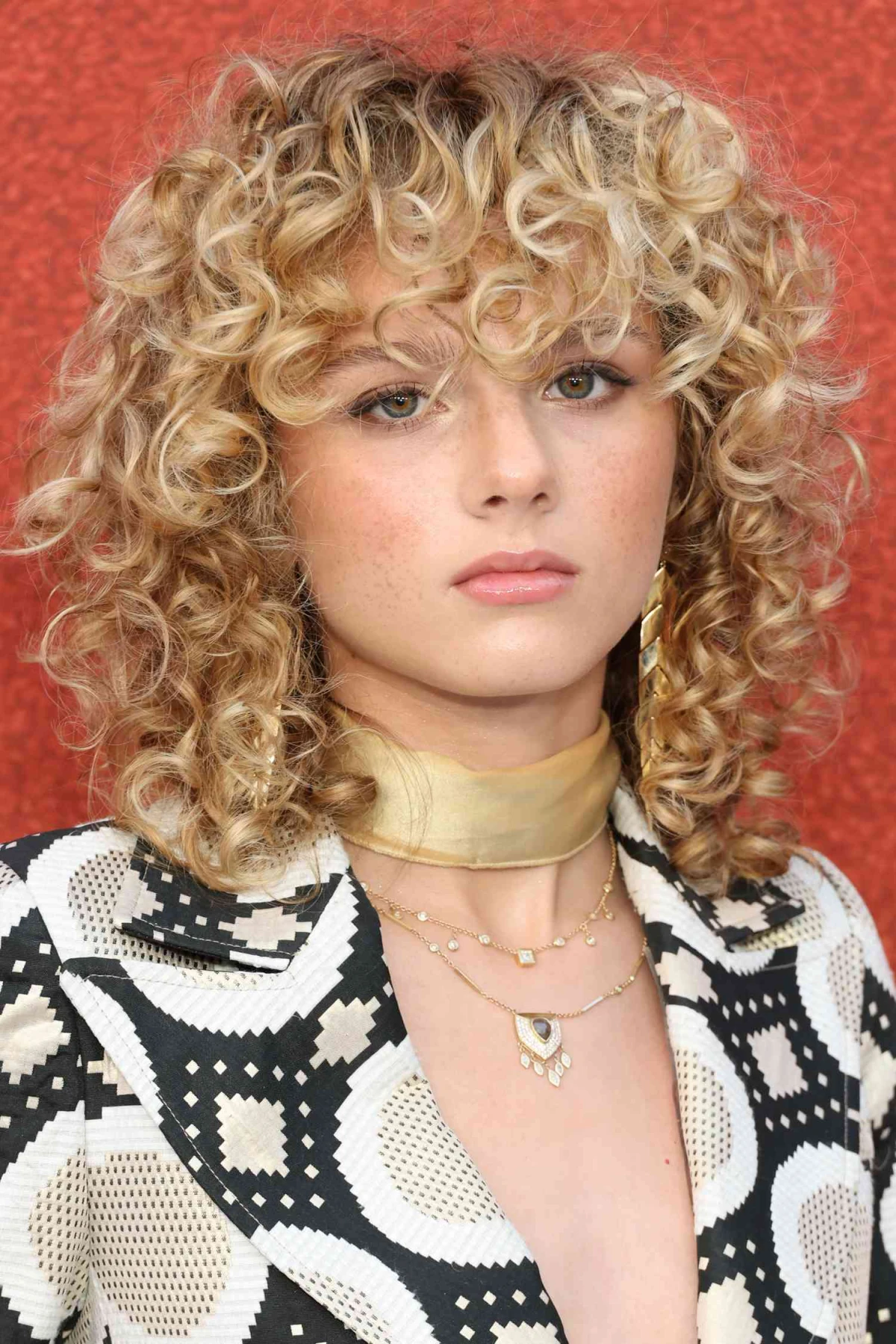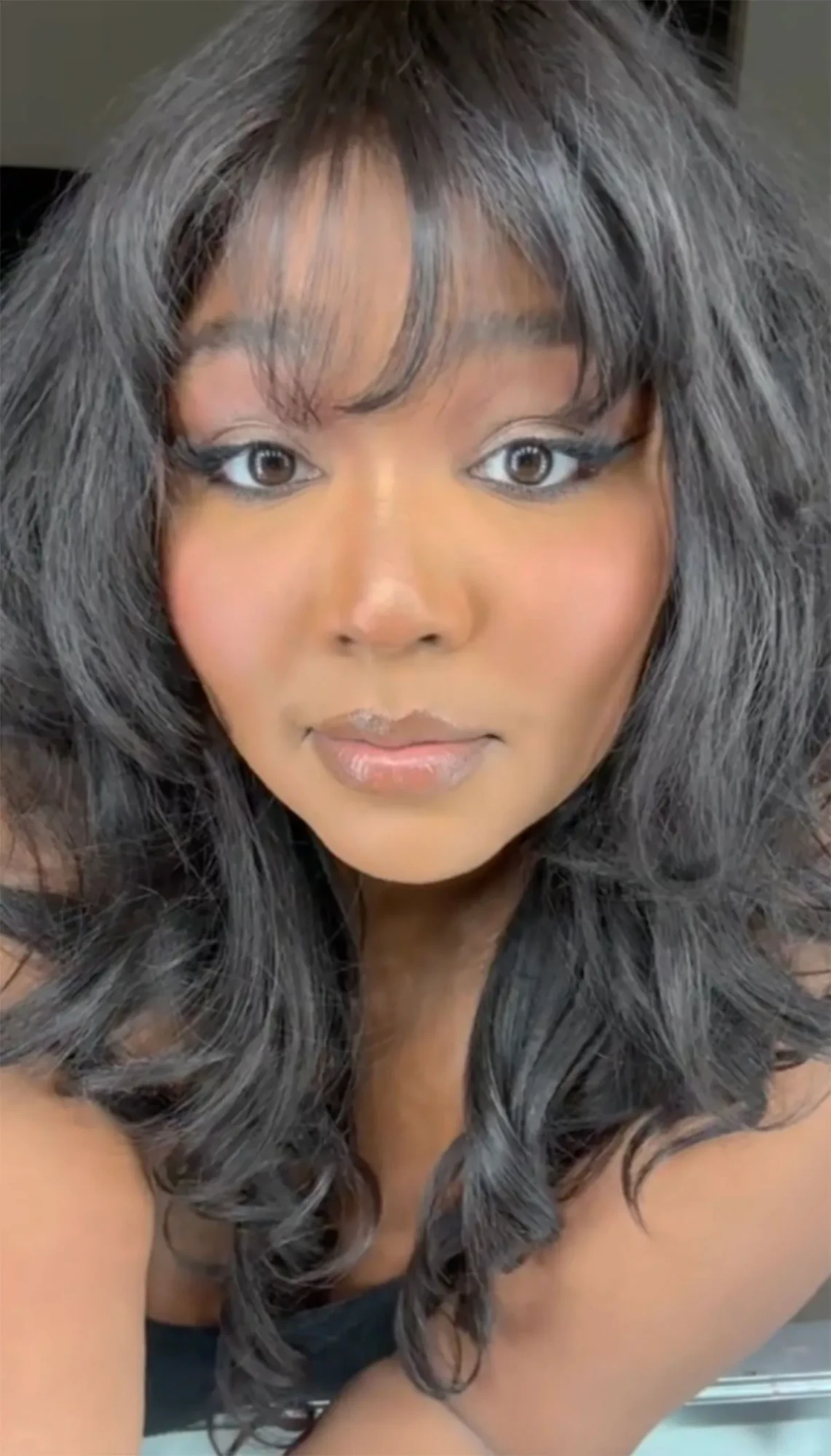The Real Deal on the Wolf Cut: A Stylist’s Honest Guide
So, you’re thinking about getting a wolf cut. I get it. It’s that perfectly messy, cool-girl hair that looks like it just… happened. But before you book that appointment, let’s have a real chat. After decades behind the chair, I’ve seen this style evolve from a niche look into a full-blown salon staple, and I want to give you the honest inside scoop.
In this article
- Are You Really Ready for a Wolf Cut?
- What Even Is a Wolf Cut, Anyway?
- The Consultation: The Most Important Part of the Haircut
- Let’s Talk Money: The Real Cost of a Wolf Cut
- A Warning: Please Step Away From the DIY Ponytail Method
- Your Daily Styling Toolkit
- The 3-Minute “Day Two” Revival
- Final Thoughts: It’s a Partnership
- Galerie d’inspiration
First things first, let’s see if this haircut really fits your life. Ask yourself these questions, and be honest!
Are You Really Ready for a Wolf Cut?
- Your Morning Routine: Am I okay with spending 10-20 minutes styling my hair most days? This isn’t usually a wash-and-go style.
- Your Budget: Can I afford a salon visit every 6-8 weeks for a trim? This cut has a shelf-life, and maintenance isn’t optional.
- Your Hair’s Health: Is my hair in decent shape? If it’s super fragile from bleaching, the intense layering and texturizing could cause issues.
- Your Hair’s Length: Is my hair long enough to begin with? You’ll want your hair to be at least shoulder-length to get that signature layered effect without it turning into a super-short shag.
If you answered yes to those, awesome! Let’s dive deeper.

What Even Is a Wolf Cut, Anyway?
I remember when clients first started bringing in photos of this cut. We just called it a “modern shag.” Now it has its own name, but a lot of people are still confused about how it differs from a shag or a mullet. It’s honestly a hybrid of the two.
Think of it like this:
- A classic shag is all about blended, feathered layers all over, creating soft volume and a rounded shape. It’s very connected.
- A traditional mullet is more extreme—it’s the whole “business in the front, party in the back” vibe, with very short hair on top and sides and a long, disconnected tail.
- The wolf cut lives in the middle. It takes the heavy, choppy layers from the shag on top and around the face, but keeps the length in the back like a mullet. The key difference is that the top is often ‘disconnected’ from the bottom, creating a distinct two-tiered silhouette that gives it that wild, untamed feeling.
This dramatic layering is also why the cut can be tricky. On fine hair, removing too much bulk can leave the ends looking stringy and weak. But on super thick hair, if it’s not thinned out properly, the short layers can puff up into a dreaded “helmet” shape. The sweet spot? Medium-density hair with a bit of a natural wave is the absolute perfect canvas.

The Consultation: The Most Important Part of the Haircut
Before I even pick up my shears, we talk. A lot. This conversation is where we manage expectations and make sure you’ll love your hair for weeks to come, not just for the Instagram photo.
Here’s what a good stylist will discuss with you:
- Lifestyle & Styling Time: As we covered, if you’re a five-minute-and-out-the-door person, you might find this cut frustrating. It needs a little love to look its best.
- Face Shape: By the way, this cut can be tailored beautifully! It’s amazing for softening a square jawline. For rounder faces, I usually suggest keeping the face-framing layers a bit longer—past the chin—to create an elongating effect.
- Hair History: Heavily processed hair is fragile. A razor, which gives a great feathered texture on healthy hair, can shred damaged ends. I learned that the hard way early in my career and had to work with a client for months to repair the damage. Now, I always stick to shears for compromised hair.
I once had a lawyer who wanted a super edgy wolf cut, but she also had to look polished for court. We compromised with a “cub cut”—a softer version with longer, more blended layers. It gave her the vibe she wanted without being too aggressive for her professional life. A stylist who is honest about what will (and won’t) work for you is a keeper.

Let’s Talk Money: The Real Cost of a Wolf Cut
This is the question everyone has but is sometimes afraid to ask. A technical cut like this is an investment. In a major city at a reputable salon, you should expect to pay anywhere from $120 to $250+ for the initial cut. In a smaller town or suburb, the price might be closer to $90 to $150.
And don’t forget maintenance! To keep the shape looking sharp, you’ll need a trim every 6-8 weeks. Budget around $70 to $130 for these follow-up appointments. Oh, and if you’re coming in to fix a DIY job? A major correction service often starts at $200 and can go up from there, because it takes time and skill to fix uneven layers and holes.
A Warning: Please Step Away From the DIY Ponytail Method
I see the videos. Tie your hair in a ponytail on your forehead and just… chop. As a professional, it gives me anxiety. I’ve had to fix so many of these, and it’s not pretty.

Here’s the deal: that method ignores your head shape, creating bizarrely uneven layers. It doesn’t account for varying hair density, so you might get weak, see-through sections at the back. Worst of all, it creates a blunt, heavy line of hair that looks like a bad wig sitting on top of longer strands. It’s a harsh ‘shelf,’ not the soft, blended texture you’re hoping for.
Seriously, find a pro. Look for stylists on social media who specialize in shags and modern layers. Search hashtags like
wolfcut,
shagcut, or #[yourcity]hairstylist. A huge tip: don’t just look at photos. Look for videos that show the hair in motion. That’s how you know the cut is truly well-structured.
Your Daily Styling Toolkit
Okay, you got the cut from a great stylist. Now what? Here’s how you bring it to life at home.
- Texture Spray is Your Hero: This gives the hair that gritty, lived-in feel. For a budget-friendly option, something like Not Your Mother’s Beach Babe Texturizing Sea Salt Spray (under $10 at Target) does the trick. Want to splurge? Oribe’s Après Beach Wave and Shine Spray is salon-quality magic.
- Volumizing Mousse for Fine Hair: If your hair needs a little extra oomph, a good mousse applied at the roots before drying is a game-changer.
- A Light Pomade or Cream: Use a tiny, pea-sized amount to define the ends of your layers. Rub it between your palms until it practically disappears, then scrunch it into the ends.

The 3-Minute “Day Two” Revival
Woke up and your wolf cut looks a little… flat? Don’t worry. This is my go-to fix:
- Hit your roots with a blast of your favorite dry shampoo for instant lift.
- Lightly mist your bangs and the front pieces with a water bottle. Just enough to make them damp, not soaking.
- Scrunch the damp pieces with your hands and let them air-dry for a few minutes. Done!
Final Thoughts: It’s a Partnership
The wolf cut is an incredibly fun, expressive style. It’s a statement. But it’s a partnership between a client who is ready for the maintenance and a stylist who has the technical skill to pull it off. If you’re ready to take the plunge, find a stylist whose work you love, bring your photos, and be open to their expert advice. Together, you can create a look that’s perfectly, beautifully you.
Galerie d’inspiration


Wondering how you’ll manage the grow-out phase?
It’s the question every wolf cut veteran asks. The heavily disconnected layers are the biggest challenge. Your stylist is your best ally here. The first few months involve trimming the longer back sections to allow the shorter top layers to catch up. This can temporarily morph your cut into a more classic shag. From there, you can transition into a textured ‘bixie’ (bob-pixie), a choppy bob, or continue growing it into long, blended layers. Regular micro-trims every 6-8 weeks are non-negotiable to avoid a mullet-y ‘tail’ and keep the shape intentional.

The wolf cut’s search interest skyrocketed by over 1000% in 2021, heavily influenced by its adoption by K-pop idols.
While the West embraced a grungier, more rock-and-roll version, the K-pop interpretation often features softer, wispier curtain bangs and more seamlessly blended layers. It’s a slightly less rebellious and more polished take on the trend, proving the cut’s incredible versatility across different aesthetics.

Sea Salt Spray: Ideal for fine to medium hair. It provides a gritty, matte texture that screams ‘effortless beachy waves.’ A great choice for faking second-day hair. Try OUAI Wave Spray for a light, non-sticky hold.
Texturizing Mousse: Best for thick, wavy, or curly hair that needs volume and definition without being weighed down. It helps control frizz while enhancing the shape of the layers. L’Oréal’s Tecni.ART Full Volume Extra Mousse is a salon staple.
Ultimately, a spray gives grit, while a mousse gives body and structure.

- Creates incredible, natural volume at the crown.
- Reduces bulk and weight, allowing curls to spring up.
- Frames the face beautifully with shorter, coily tendrils.
The secret for curly wolf cuts? A stylist who specializes in dry cutting. This technique allows them to cut each curl individually where it naturally lives, preventing the dreaded triangular ‘pyramid’ shape and ensuring the layers work with your specific curl pattern, not against it.

A word of caution on the viral DIY tutorials: Cutting your hair in a high ponytail, as many online videos suggest, is a recipe for disaster. This method doesn’t account for your head shape or natural hair growth patterns, often resulting in severe, unintentional ‘holes’ and chunky, uneven steps that are incredibly difficult for a professional to correct without sacrificing significant length.
To truly master the daily styling of your new cut, your toolkit should go beyond just a blow dryer. Consider these essentials:
- A root-lift spray for that signature volume up top.
- A dry texturizing powder, like Kristin Ess’s Loose Styling Powder, puffed into the roots and mid-lengths for instant grip and piecey separation.
- A 1-inch flat iron to create subtle bends or to flick the ends out for that classic shag finish.










